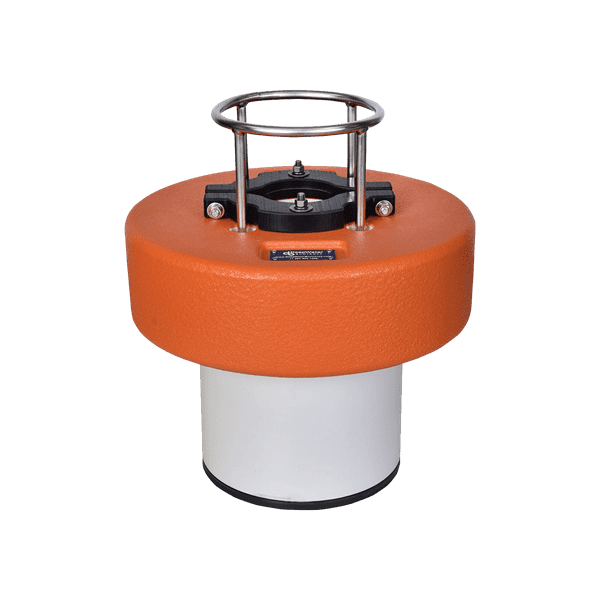BlueZone partners with over 50
world-leading original equipment
manufacturers and systems providers
OG04 Kailani Telemetry Buoy
OG04 Kailani Telemetry Buoy
Introduction
The Kailani Telemetry Buoy (KTB) implements seafloor to space communications for ocean floor instruments.
The compact sea surface buoy package is just 460mm in diameter and less than 25kg making it ideal for deployment from small boats. Inside the buoy is a battery power supply providing a minimum of 30-days endurance with longer durations possible using on-board solar photovoltaic charging. Computing power in the KTB provides for communication with ocean floor instruments, reception and batching of data and transmission by either satellite or VHF radio link.
The “Internet of Things at Sea” – IoT@Sea – is made real by the Kailani Telemetry Buoy for receiving real-time data from your deployed instruments.
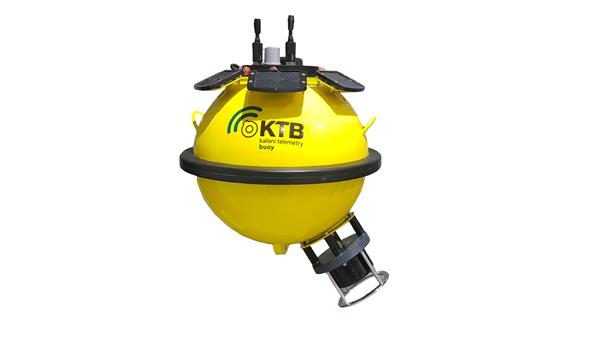 |
| The compact Kailani Telemetry Buoy implements the Internet of Things at Sea. |
Typical Configuration
Originally developed for customers that required real-time wave, current and tidal data, a typical configuration of the Kailani Telemetry Buoy for coastal monitoring applications could include:
- An underwater sensor module for sensing wave, current and tide data mounted on a seabed frame
- Wave & Current data: Teledyne RDI Workhorse Sentinel 600 ADCP incorporating Waves Array and NEMO Waves Processing Module
- Tide data: RBRvirtuoso
- Data transmission from the underwater sensor module to the surface buoy using Teledyne Benthos acoustic modems
- Data transmission service using Iridium Satellite Communications (Beyond Line of Sight) and VHF radio modem (Line of Sight)
- Data reception on-shore using a battery powered Satellite Shore Receiver (Line of Sight and Beyond Line of Sight) or web terminal services via the Internet
All sensors are typically powered by in-built battery packs.
The Kailani Telemetry Buoy is suitable for many applications, including scientific studies, water quality monitoring, coastal engineering projects and harbour and coastal monitoring. KTB includes a complete data telemetry solution, including either field, desk top or web-based access to ocean sensor data. KTB can be modified and adapted to suit your application.
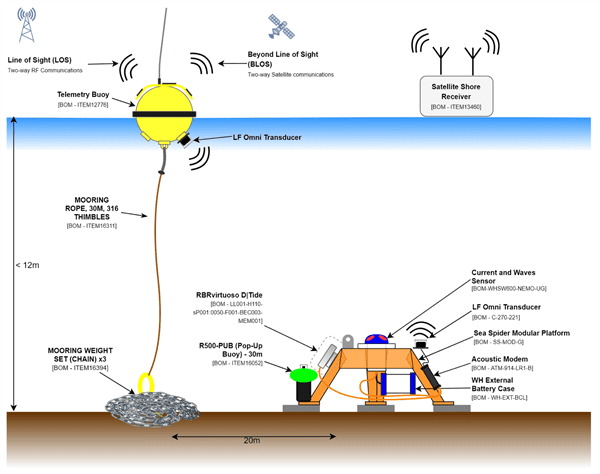 |
| Typical Kailani Telemetry Buoy configuration. |
Deployment & Recovery
Deployment of the Kailani Telemetry Buoy is usually managed using a lightweight crane of jib fixed to the lifting strop on the seabed frame in two steps:
- Deploy Sea Spider using lifting rope, snap shackle and lanyard
- Deploy Telemetry Buoy using mooring rope to lower mooring chains
Stable deployment on instruments on the seafloor is assured through use of the reliable Teledyne OceanScience Sea Spider seabed frame. This fibreglass frame is robust and hard wearing an easily adaptable to mounting of a variety of instruments and sensors.
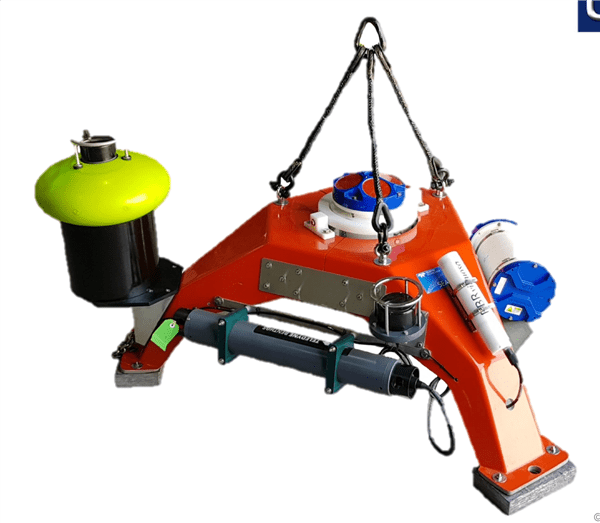 |
| Complete seabed frame ready for deployment using lifting strops. |
Mooring of the buoy is facilitated through the use of 16kg modular chain sets. These sets are ideal for providing an easy-to-handle and adaptable method to vary the mooring weight for the Kailani Telemetry Buoy.
A Pop-up-buoy (PUB) fitted to aid recovery. The PUB is acoustically triggered and floats to surface with recovery line attached.
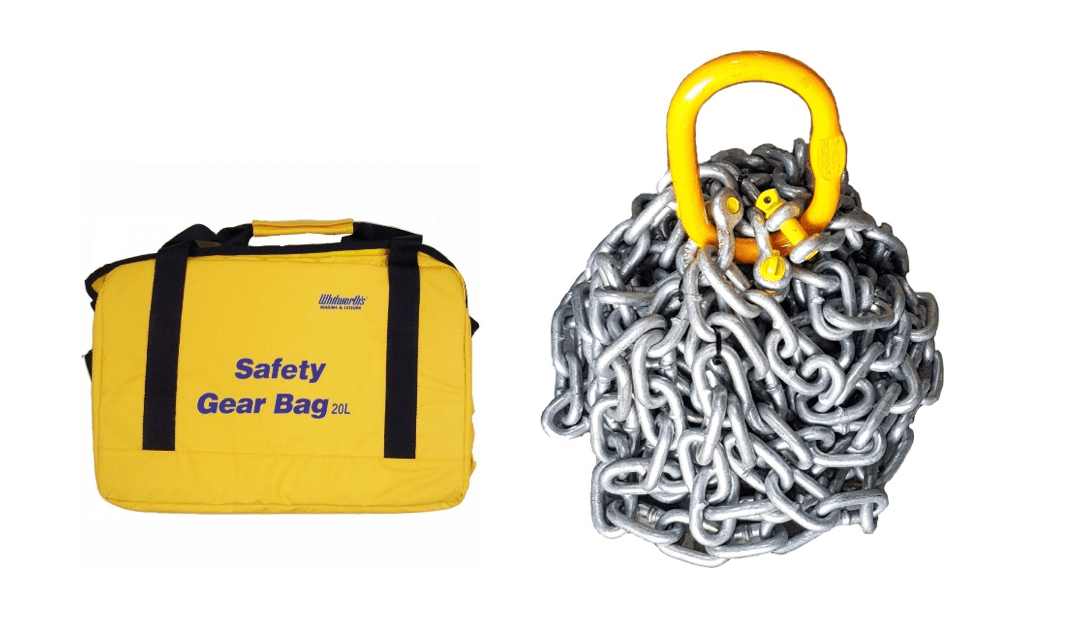 |
| Modular Chain and Storage Bag aids easy deployment of Kailani Telemetry Buoy. |
Satellite Shore Receiver
The Satellite Shore Receiver (SSR) provides for reception of data from the Kailani Telemetry Buoy by either line-of-sight VHF radio link or by satellite date services. It is ideal of receiving real-time data in the field either by radio link or by satellite.
The advantage of VHF radio link is that there is no cost for the data transmission using common VHF radio bands. The limitation of radio links is the capability to obtain a line-of-sight to the buoy which is highly dependent on the receive antenna height and ambient radio conditions.
The satellite data transmission service provides users with reliable global data coverage using providers such as Iridium. Customers can arrange their own accounts and control transmission services to meet the needs of their operations. Satellite data can be received by the Satellite Shore Receiver (e.g. for reception of real time data in the field) or downloaded from a web server for desk top data access world-wide.
 |
| Data Flow for the Kailani Telemetry Buoy System – both VHF and satellite communications are supported. |
The Satellite Shore Receiver logs all data it received from KTB. Log files are downloadable through an Ethernet connection to SSR web interface. Log files are plain text.
The SSR is battery powered and rechargeable using either 240VAC mains or 12VDC supplies.
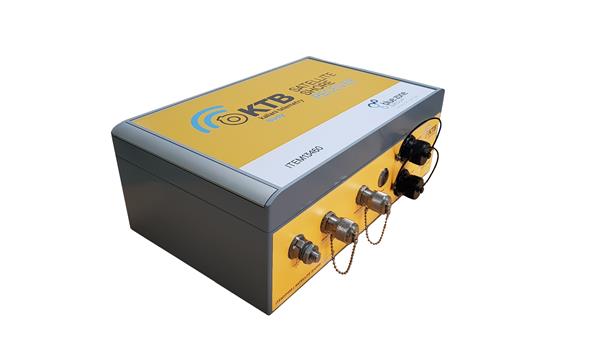 |
| The Satellite Shore Receiver is ideal of receiving real-time data in the field either by radio link or by satellite. |
Data Collection
The Kailani Telemetry Buoy provides for storage and forwarding of all data received from seafloor instruments. Many of these instruments also store their own data so that redundancy is provided by the KTB data storage function.
All data can be downloaded from a logged file list when buoy retrieved post mission using an Ethernet connection to a user PC.
The Satellite Shore Receiver receives and stores data when powered on. It can receive data either via a VHF radio link or by satellite link as configured by the user. An Ethernet connection between Satellite Shore Receiver and user PC enables fast and easy download of all data from a logged file list.
The Kailani Telemetry Buoy and Satellite Shore Receiver each have 32GB of data storage.
Endurance
Endurance of the Kailani Telemetry Buoy is determined by battery life. For worst case conditions endurance is 32 days with zero solar contribution and 10% remaining battery.
Satellite Shore Receiver endurance on battery power is 48 hours.
Endurance of the acoustic modem will depend on bit rates and power settings. For a typical application transmitting 33Kb in a 24-hour period then endurance is expected at 55 days.
Key Data
|
Kailani Telemetry Buoy |
|
|
Weight |
< 25kg |
|
Data Storage |
32GB |
|
Re-charging |
Power Supply provided – same for KTB & SSR |
|
Satellite Shore Receiver |
|
|
Weight |
< 5kg |
|
Data Storage |
32GB |
|
Ingress Protection |
IP56 |
|
Re-charging |
Power Supply provided – same for KTB & SSR |
Mission Configuration
The Kailani Telemetry Buoy is easy to configure and trouble shoot with an Ethernet cable provided for a direct connection between a PC and buoy. The buoy hosts a webpage that displays system information useful for checking the KTB and working with data including:
- User modified settings (IP address, date and time)
- Battery health
- Logged sensor data
- Logged system data
The Ethernet connection is typically used in a sheltered location such as a boat/dock/workshop pre/post mission and is not designed for use when the KTB is deployed.
Packaging for Handling & Transportation
The Kailani Telemetry Buoy and all components and accessories are specifically designed for easy handling and transportation in small boats. All items are provided in robust “Pelican” transport cases to ensure protection of equipment during transit and easy loading and unloading.
Kailani Telemetry Buoy in Action
Check out these videos of the Kailani Telemetry Buoy for more information on how it all works!
| Unboxing from transit packaging in a rugged “Pelican” case and booting-up the Kailani Telemetry Buoy. |
| At less than 25kg the Kailani Telemetry Buoy is easy to manage for a two-person deployment.
|
| The Acoustic Modem provides through-water data connection to the Kailani Telemetry Buoy.
|
| Booting up the Acoustic Modem.
|
| The Satellite Shore Receiver provides for reception of VHF or Satellite signals.
|
| Demonstration of Kailani Telemetry Buoy software.
|
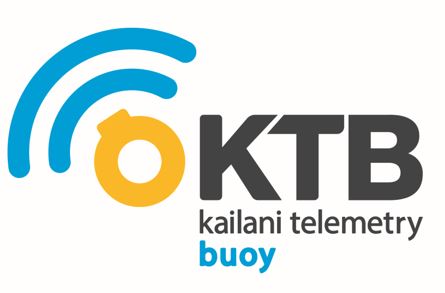 |
Key Features
Up to 25-hour mission duration
Speeds up to 4.2 knots
Increased module payload capacity
Search and recovery
Hydrography
Deep sea mineral exploration
Marine & Fisheries research
Product Enquiry
Related products
Blueprint's Oculus range of multibeam imaging sonars offers single and dual-frequency models with unparalleled image quality in a compact, rugged form factor.
Read moreMooring Systems, Inc. manufactures spherical shaped subsurface buoyancy for ADCP buoy applications with integral stainless steel instrument mounting frames, or with single strength members for use as primary or back-up...
Read moreDeepWater Buoyancy’s Pop-Up Buoy Recovery System (PUB) allows for direct retrieval of seabed packages, such as anchors, anchor lines, and bottom-mounted frames and instruments.
Read moreRelated Articles
Ahead of the Tide: A Year of Milestones and Momentum- A Letter from the Director
By Neil Hodges, Managing Director, BlueZone Group As 2025 draws to a close, it’s a moment to reflect on a year that has been nothing short of transformative for...
Read MoreGlobal Journeys, Fresh Faces and Capability Growth That Sets the Stage for the Future For BlueZone Group, 2025 has been nothing short of transformative — a year defined by...
Read MoreSafer Summers: Innovation Beneath the Waves with ArtemisSAR and StarFish
The Advanced Sonar Systems Giving Surf Life Savers the Tools to Protect Lives with Greater Speed, Safety, and Confidence As we turn the page into Aussie summer, the rhythm...
Read More



